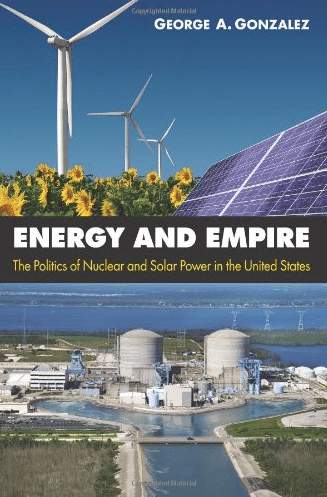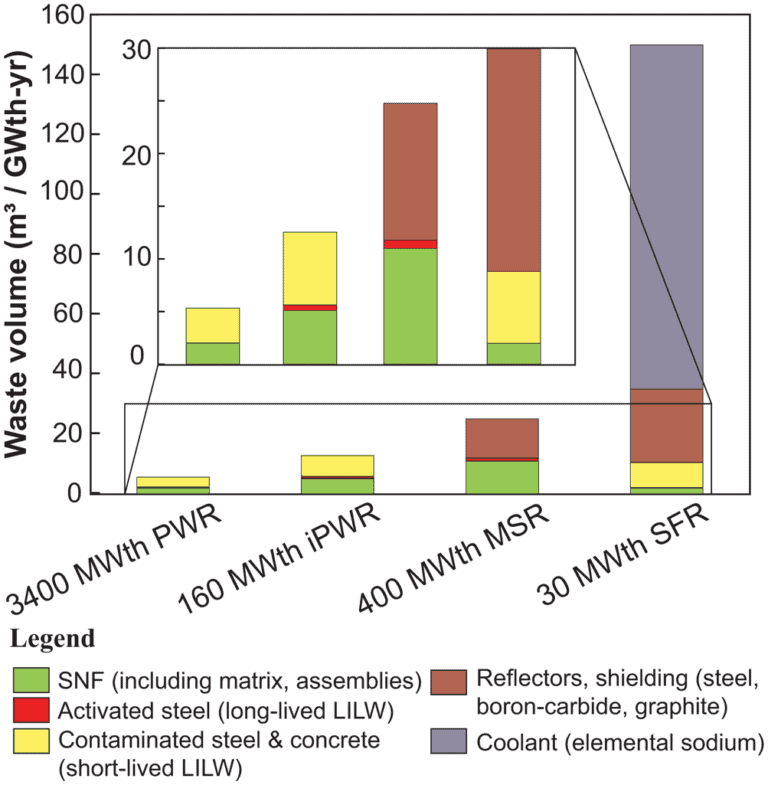Atomic Show #190 – Nuclear plant performance during Hurricane Sandy
There are 34 nuclear reactors located in areas affected by Hurricane Sandy. Of those, 7 were shutdown for planned maintenance. Three units tripped due to disturbances on the grid or issues with one of their redundant cooling systems. The other 24 remained operational and supplied as much power as the grid could accept.
On Sunday, November 4, I gathered a group of pronuclear communicators, each with their own blog, to talk about the technology’s resilience and about how a certain segment of the antinuclear industry loves to spread scary what if stories. Every time nature tests our nuclear power plants and they perform well, the anti’s tell us that “we almost lost (fill in the blank)”. Then they point to an event like Fukushima and tell us that proves that nature can throw more at nuclear plants than they can handle.
What they fail to admit, however, is that even a very bad event that destroys three formerly productive nuclear power units at an admittedly vulnerable site with insufficient preventive measures did not result in a single human injury any worse than a mild sunburn from exposure to radiation.
As amateur pro nuclear communicators, we have all chosen a rather unusual hobby; we continue to spread the truth about nuclear energy and continue to explain to people that it really does have the power to save the world from many of its most pressing challenges.
Guests on this show include:
Margaret Harding, who blogs at 4 Factor Consulting
Meredith Angwin, who blogs at Yes Vermont Yankee and ANS Nuclear Cafe
Will Davis, who blogs at Atomic Power Review and ANS Nuclear Cafe
Additional Reading
Spent Fuel Pool at Oyster Creek
Entergy Louisiana and Entergy Arkansas and Hurricane Sandy
Hurricanes and Nuclear Plants in the Main Stream Media
Podcast: Play in new window | Download (Duration: 1:16:57 — 35.4MB)
Subscribe: RSS




I look forward to downloading and listening to the podcast. Margaret, Meredith, Will and Rod are sure to make for a good conversation.
Regarding nuclear plant safety…Even though Fukushima didn’t result in any deaths, the damage to the plants and the radioactive contamination to the land around them makes for a good argument that inherently safe plants need to be developed which do not need emergency AC sources of power. Therefore, the following piece of news is somewhat disappointing. The Dept. of Energy is stopping its funding of SMR R&D at the Savannah River Site.
http://www.aikenstandard.com/article/20121107/AIK0101/121109642/small-reactor-work-at-srs-put-on-hold
This is bad news. And just when I thought that the USA was actually rather better than I feared on the stimulation of nuclear technology development. Or is that overstatement?
@ Joris,
There is plenty of capital to finance SMR R&D around the world. The US, Russia, China, France, South Korea are all in on it.
The DOE financing is not an issue to me.
@Joris,
The DOE needs to stop pretending that it is the “Energy” department and come to terms with it being the nuclear weapon and national security department.
Joris- The article I linked to only mentions the program at the Savannah River Site. There is a separate SMR project in the works involving B&W and TVA. I’m sure Rod could provide more details on the current status. Below is a link to a rather long article. Page 4 discusses the TVA memorandum of understanding with B&W and the NRC licensing path.
http://www.powermag.com/nuclear/Small-Is-the-New-Big-The-B-and-W-Small-Modular-Reactor_4821_p4.html
“… a very bad event that destroys three formerly productive nuclear power units at an admittedly vulnerable site with insufficient preventive measures did not result in a single human injury any worse than a mild sunburn from exposure to radiation.”
Your statement above misses a large part of what is wrong with nuclear power. The Fukushima accident is not just a sunburn as you imply:
Expensive accident: >$500 billion
Thousands of people evacuated from there homes: >100,000 people
Thousands of businesses destroyed
Huge area of Fukushima area land contaminated for years
Japan was lucky the wind was blowing out to the ocean most of the time
Japan was lucky that the radioactive liquids spilled into the deep ocean
the
Ok, I have been shooting off my mouth about the ability of plants to Load follow and why that would make the LFTR a much better choice. I found out that ALL Nukes can load follow but that the NRC does not want the grid operators to directly control the Power output of a Nuke. Suddenly using a Molten Salt heat storage as the interface to the steam plants makes HUGE sense to me.